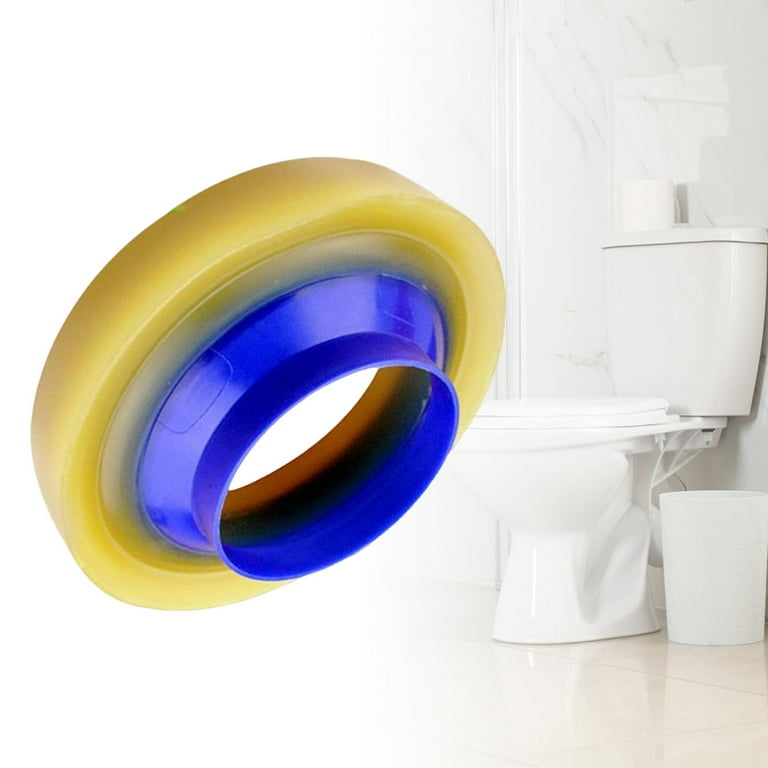Almost everyone maintains their personal conception in relation to Toilet Flange Repair.

Intro:
Understanding the Importance of a Toilet Flange:
In the world of plumbing, the often-overlooked toilet flange plays a crucial role in making sure the seamless operation of your washroom fixtures. Acting as an essential connector between your bathroom and the underlying drain, the commode flange serves as the unsung hero of your plumbing system. Without this strong part, your commode would certainly be prone to instability and leaks, possibly causing pricey fixings and aggravation. Therefore, understanding the value of a properly installed and maintained commode flange is critical for any kind of homeowner embarking on plumbing jobs or attending to fixing needs.
Why Proper Installation and Maintenance Matter:
Appropriate installment and meticulous maintenance of the bathroom flange are essential for protecting the honesty of your plumbing framework. A thoroughly installed flange not just anchors your commode securely in place however additionally develops an impenetrable seal, preventing the perils of leaks and smells. By accepting a proactive strategy to flange upkeep, you can reduce the risk of turbulent plumbing issues and protect the tranquillity of your family environment. Throughout this informative overview, we'll unwind the intricacies of bathroom flange installment and repair work, encouraging you with the knowledge and expertise to navigate these vital jobs expertly.
Best Practices When Installing a Toilet Flange:
Guaranteeing a smooth commode flange installment needs adherence to a collection of ideal techniques that assure durability and functionality. Begin by meticulously evaluating your devices and products, guaranteeing you have the needed devices for the work ahead. Choosing the proper flange product, whether PVC, ABS, or cast iron, is extremely important, as it establishes the durability and performance of your plumbing fixture. Moreover, evaluating existing plumbing conditions, such as checking for damages or deterioration, is important for preemptively attending to prospective issues and ensuring a smooth installation procedure. By taking on these primary actions, you established a strong foundation for an effective commode flange installation, minimising the likelihood of future issues and promoting long-term upkeep.
As soon as sufficiently ready, wage the mindful elimination of the old flange, complying with a methodical technique to stay clear of creating damage to surrounding components. Use strategies customized to deal with stubborn or rusted flanges, ensuring their swift and safe elimination without compromising the stability of the bordering plumbing framework. With the old flange removed, thoroughly mount the new replacement flange, choosing one that fits well and firmly into place. Correctly protecting the flange to the flooring using screws or adhesive is vital, as it makes certain security and protects against future leakages. By sticking to these ideal techniques throughout the installment procedure, you prepared for a durable and reputable commode flange configuration that stands up to the test of time.
Setting Up a New Toilet Flange:
When installing a brand-new commode flange, the initial step is to select the ideal substitute for your plumbing configuration. Consider elements such as the material of the flange, with choices consisting of PVC, ABS, or cast iron. PVC flanges are known for their affordability and resistance to corrosion, making them a prominent selection for DIY enthusiasts. ABS flanges offer similar advantages to PVC but boast added sturdiness, making them ideal for high-traffic areas or business settings. Cast iron flanges, renowned for their strength and durability, are perfect for installations where sturdiness is extremely important. Furthermore, guarantee that the substitute flange is effectively sized and fits snugly into area to produce a watertight seal and protect against leakages.
Safeguarding the Flange to the Floor:
Once you've selected the appropriate replacement flange, it's crucial to secure it correctly to the flooring to make sure security and avoid future issues. Begin by placing and straightening the flange appropriately over the drain, guaranteeing that it sits flush with the floor surface. Relying on the kind of flange and your particular setup preferences, you can safeguard the flange to the flooring utilizing screws or sticky. If making use of screws, make certain to use corrosion-resistant options to prevent rusting gradually. Conversely, adhesive can supply a protected bond in between the flange and the floor, making certain a durable and reputable setup. By complying with these actions and taking the necessary safety measures, you can install a brand-new bathroom flange with confidence, making sure a lasting and leak-free plumbing component.
Ideal Practices When Repairing a Broken Flange:
Fixing a damaged toilet flange needs careful interest to information and adherence to ideal techniques to make sure a lasting service. Begin by completely evaluating the level of the damages and identifying the underlying cause, whether it be deterioration, splits, or imbalance. This assessment will certainly assist your repair work approach, allowing you to choose the most proper strategies and products for bring back the flange to its optimum condition. Furthermore, take into consideration the bordering plumbing framework and flooring security to attend to any kind of possible adding elements and stop future issues from arising. By carrying out a comprehensive assessment and evaluation, you lay the groundwork for a reliable and long-lasting fixing procedure that solves the source of the trouble.
With a clear understanding of the flange's condition and the factors affecting its damage, wage the repair service procedure using precision and treatment. Depending on the intensity of the damage, you might go with fixing approaches such as epoxy putty, repair flange kits, or partial flange substitutes. Make certain that the chosen repair method successfully attends to the particular problems at hand while preserving the architectural honesty and capability of the flange. In addition, take aggressive measures to reinforce the repaired flange and prevent future damage, such as applying sealant or waterproofing materials to protect versus leaks and corrosion. By adhering to these best methods during the repair work process, you can recover your damaged flange to ideal condition, guaranteeing the long-term reliability and performance of your plumbing system.
Types of Toilet Flanges:
Understanding the various kinds of commode flanges is essential for picking one of the most ideal choice for your plumbing needs. PVC, ABS, and cast iron are amongst the typical products used in toilet flange building and construction, each offering unique advantages and factors to consider. PVC flanges, recognized for their cost and deterioration resistance, are favoured for their ease of installation and durability. Abdominal flanges, comparable to PVC in regards to price and ease of setup, are valued for their effectiveness and resistance to influences. On the other hand, cast iron flanges, renowned for their phenomenal stamina and longevity, are often preferred for high-traffic locations or business settings where longevity is vital. By acquainting yourself with the qualities of each material, you can make a notified decision when picking a bathroom flange that straightens with your details requirements and choices.
In addition to product considerations, bathroom flanges also come in different styles and designs to suit various plumbing configurations and setup choices. Offset flanges, for instance, are made to fit commodes installed on floors that are not level or where the drain lies off-centre. Similarly, repair service flanges, additionally known as repair service rings or spacer rings, are made use of to address issues such as fractured or broken flanges without the requirement for considerable plumbing modifications. In addition, adjustable flanges offer versatility ready, permitting specific alignment and fit during setup. By checking out the varied variety of commode flange kinds and layouts readily available, you can pick the alternative that ideal suits your plumbing setup and installation requirements, ensuring a smooth and reliable solution for your washroom components.
Specialized Options:
In addition to traditional commode flanges, there are specialized choices available to resolve certain plumbing challenges and installment choices. One such option is the countered flange, which is developed to suit bathrooms installed on floorings that are not level or where the drain is located off-centre. Offset flanges feature an one-of-a-kind layout that permits the toilet to be positioned at a minor angle, making up for irregular flooring or misaligned plumbing connections. This cutting-edge option makes sure a safe and secure and stable installation, getting rid of the requirement for expensive and taxing flooring progressing or pipeline moving. By integrating a balanced out flange into your plumbing configuration, you can conquer common installation barriers and attain a professional-quality result with ease.
Another specialty option worth considering is the fixing flange, likewise known as a repair ring or spacer ring. Repair flanges are especially developed to address concerns such as broken or damaged toilet flanges without the need for considerable plumbing adjustments. These functional components can be mounted directly over the existing flange, supplying a tough and reputable base for safeguarding the toilet in position. Repair flanges been available in numerous dimensions and configurations to fit various flange sizes and installment requirements, making them a convenient and economical solution for fixing flange-related problems. Whether you're handling a minor flange repair service or a much more complicated plumbing problem, integrating specialized choices like countered and repair flanges can improve the setup process and guarantee long-lasting performance for your restroom fixtures.
Verdict:
Finally, grasping the art of bathroom flange installation and fixing is vital for keeping a practical and leak-free plumbing system in your home. By recognizing the significance of a properly mounted flange and adhering to finest practices throughout the procedure, you can make certain the durability and integrity of your bathroom components. Whether you're picking the right kind of flange, carrying out fixings, or exploring specialty choices, focus to information and meticulous execution are essential. Routine upkeep and positive fixing can assist stop pricey plumbing concerns and maintain the peace of your house setting. Equipped with the understanding and skills gotten from this detailed overview, you can deal with bathroom flange installation and repair with self-confidence, encouraging you to secure your plumbing system for many years ahead.
How to Replace a Toilet Flange: A Step-by-Step Guide
A toilet flange serves as the interface between the bottom of the toilet and the drainage pipe. Typically made from PVC, rubber, cast iron, or metal, it provides a secure mounting point to anchor the toilet to the floor and ensures a watertight connection.
The flange features a ring with bolt slots to secure the toilet and a sleeve that fits into the drain pipe. When installed correctly, it maintains a sanitary and odor-free bathroom by directing waste and water efficiently into the sewage system.
What Happens When a Toilet Flange Is Installed Incorrectly?
Water leakage every time the toilet is flushed, which can damage your floor, subfloor, and even the ceiling below. Unpleasant odors due to sewage gas escaping into your home. Mold and mildew growth, compromising indoor air quality. Toilet instability — rocking or moving — breaking the wax seal or further damaging the flange. Symptoms of a Bad Toilet Flange
Water Leaking at the Base: Water pooling around the toilet base after flushing is a telltale sign that your flange needs replacing, especially if the water is dirty. Unstable Toilet: A rocking or moving toilet may have a damaged flange. Foul Odors: Sewage gas smells like rotten eggs, and if you smell it in your bathroom, you likely have a broken seal around your toilet. Visible Damage: Cracks or corrosion on your flange indicate it’s time for a replacement. Remove the Toilet Bowl
Turn off the water supply and flush the toilet to empty the tank. Use a wrench to disconnect the water supply line. Carefully remove the toilet bowl. Clear the Old Wax Ring
Use a putty knife to scrape the old wax ring from the flange and bottom of the toilet. Ensure a clean and smooth surface for the new wax ring. Detach the Damaged Flange
Inspect the flange for any visible damage. Use a wrench to loosen and remove the bolts securing the flange to the floor. Lift the damaged flange away, exposing the waste pipe. Select the Right Replacement Flange
Choose a replacement flange that matches the type and size of your old flange. Ensure it is made of durable material and has the correct specifications for your toilet. Clean the Exposed Floor Area
Thoroughly clean the exposed floor area around the waste pipe. Remove any debris or remnants from the old flange. Assess Subfloor Damage
Take this opportunity to inspect the subfloor for any signs of water damage. Addressing subfloor issues now can prevent future problems with your toilet installation. Proper Alignment & Positioning
Carefully align the new flange over the sewer pipe so that it sits flush with the floor. Use the bolt slots to position it correctly. Secure the Flange to the Floor
Insert new bolts through the flange and secure them to the floor. Use a wrench to tighten the bolts for a snug fit. https://orangecoastplumbing.net/2024/02/replace-toilet-flange/
Hopefully you liked our part about How to Replace a Toilet Flange. Many thanks for spending some time to read through our article. Are you aware of another person who is excited by How to Replace a Toilet Flange? Feel free to promote it. I am grateful for being here. Return soon.
Maintenance Sign-Up
 Barret Oliver Then & Now!
Barret Oliver Then & Now! Jenna Von Oy Then & Now!
Jenna Von Oy Then & Now! Elin Nordegren Then & Now!
Elin Nordegren Then & Now! Monica Lewinsky Then & Now!
Monica Lewinsky Then & Now! Samantha Fox Then & Now!
Samantha Fox Then & Now!